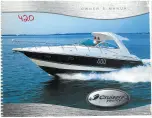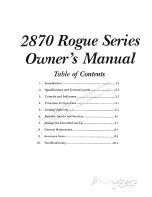
f)
Assemble and attach the oars. To do this, assemble the element with the blade
and the one with the handle - point the tip with the hole on the other tip with
the pressed pin. Insert one part into the other until the pin clicks into the hole
of the second part, tightening them firmly together. Repeat the step for the
other oar.
g)
Press the oars into the transport handles along the sides (useful when using an
engine) or attach the oars to the boat by unscrewing the knob on the screws on
the top of each side and passing the protruding thread through the holes in the
oars (in place of the black sleeves). Secure them on the inflatable boat by
reattaching the nuts.
h)
Optionally, a suitable outboard engine can be mounted on the device - to do so
it is necessary to use an additional transom (not included in the set). The
transom mounts are located at the stern of the inflatable boat.
i) IMPORTANT:
before launching the inflatable boat, make sure that it is
completely airtight, i.e. it has not been damaged in transport and its air valves
are tightly closed. To do this we recommend using a water solution with
dissolved soap or washing-up liquid. Spray or pour this solution over key parts
of the inflatable boat such as seams, air valves, etc. and watch for air bubbles
forming on their surface. If there are any, locate the source and eliminate it,
e.g. in the case of air valves tighten them with the supplied spanner. See more
in section 3.3.1.
3.2.2
Deflation of air
Before completely deflating air from the chambers, remove the seat(s) and bottom
panels. Unscrew the air protective plugs and release the air valves just by pressing
the air valves - the air should be released gradually in each chamber, otherwise the
bulkhead may be damaged. You can also use a pump to deflate the air from
chambers, connect one end of the hose to its air inlet ("INLET") and pump the air
out of the chambers.
















































